Expanded Field Recording
With the project Expanded Field Recording BJ Nilsen investigates how the experience of landscape and time can be intensified and expanded by working with VR and 3D technologies. The locations and landscapes of interest in this project are former industrial sites such as landfill sites and military sites, sites that have been repurposed and where the old function and the associated history are rendered invisible or only indirectly observable. Its traces are barely noticeable without technological extensions. The Expanded Field Recording aims to make the complex history of such places experienceable.
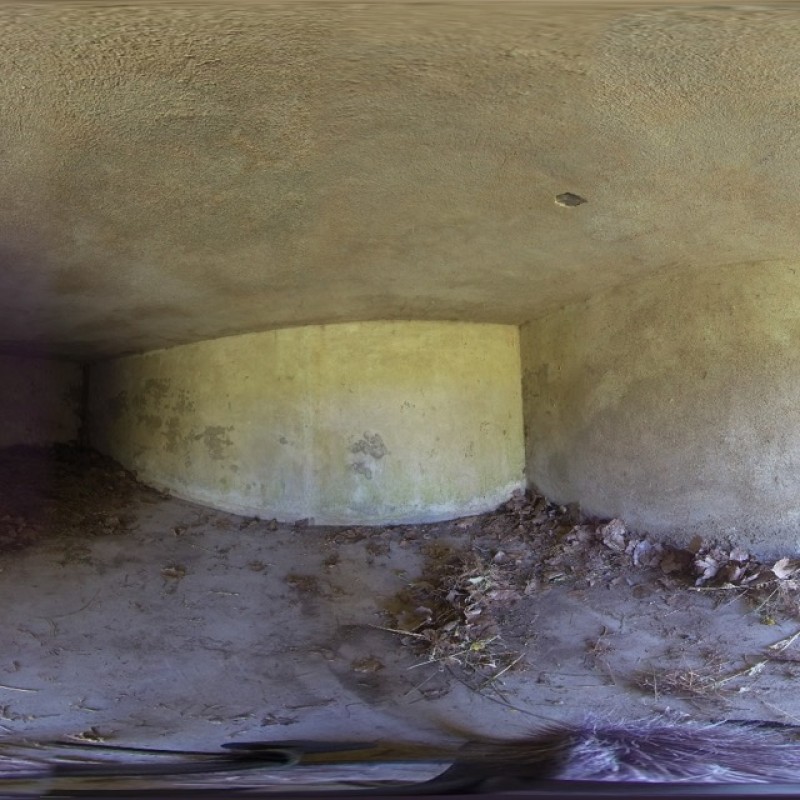
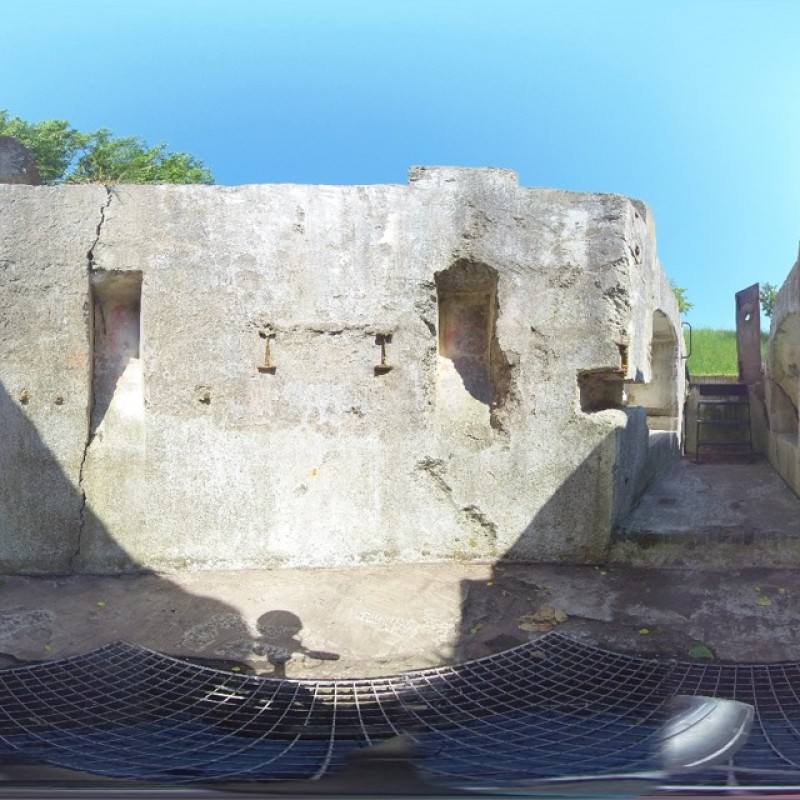

FIELD TESTS
We conducted a number of field tests in The Netherlands: at Kunstfort bij Vijfhuizen (one of forty-two forts in the defense line of Amsterdam), The Volgermeerpolder (the largest waste disposal site in the Netherlands, URENCO (uranium enrichment facility in Almelo), COVRA (long term storage facility for radioactive waste) and in Borssele (operational nuclear power station). In addition, we organized a fieldtrip to Žirovski Vrh - a former Uranium mine in Slovenia.
During these field tests, we did a series of practical experiments which helped us to understand how the equipment behaves and functions - or not - in the field. The trips also contributed to knowledge exchange between us, to developing new ideas and gathering of information.
On the various sites, we recorded various sources of data simultaneously, and gathered both inaudible and audible information: GPS, radioactivity, infrasound, electromagnetic radiation, atmospheric changes and audio field recordings, by using various applicable detectors and microphones. In addition, we recorded various formats of videos and images (multichannel video and 360º footage).
FIELD TEST 1
Kunstfort bij Vijfhuizen – a fort in the Defence Line of Amsterdam, NL
May 24, 2019
Fort bij Vijfhuizen is one of the first con¬crete build¬ings in the Nether¬lands and one of the forty-two forts in of the De¬fence Line of Amsterdam, a World Heritage Site. It was built in 1889 and 1890 with sand taken from the excavations for a new sluice-gate complex in IJmuiden. The fort is situated on a hill surrounded by a moat and accessible during opening hours.
We explored the former cannon sites and bunkers since there are lots of small rooms and cavities with interesting textures (rusted metal, lichens) and acoustics. The wildlife in the area was full of birds, buzzing insects and singing frogs. We also did some experiments with cameras attached trees, in the grass and close to the beehives. We worked extensively with 3D and Ambisonic equipment, 360° cameras and surround microphones.
Test equipment:
Microphones: Røde NTS1, Sennheiser MKH8060, Uši Pro, LOM Geophone, JrF Hydrophone.
Recorders: SD Mixpre 6, ZOOM 8.
Cameras: Insta 360 Pro, Panansonic GH2.
Software and additional hardware: Waves head-tracker, Røde Soundfield, Harpex, Reaper, GRM-Tools, Waves 360° Surround Tools Audioease and Abbey Road Studio 3.
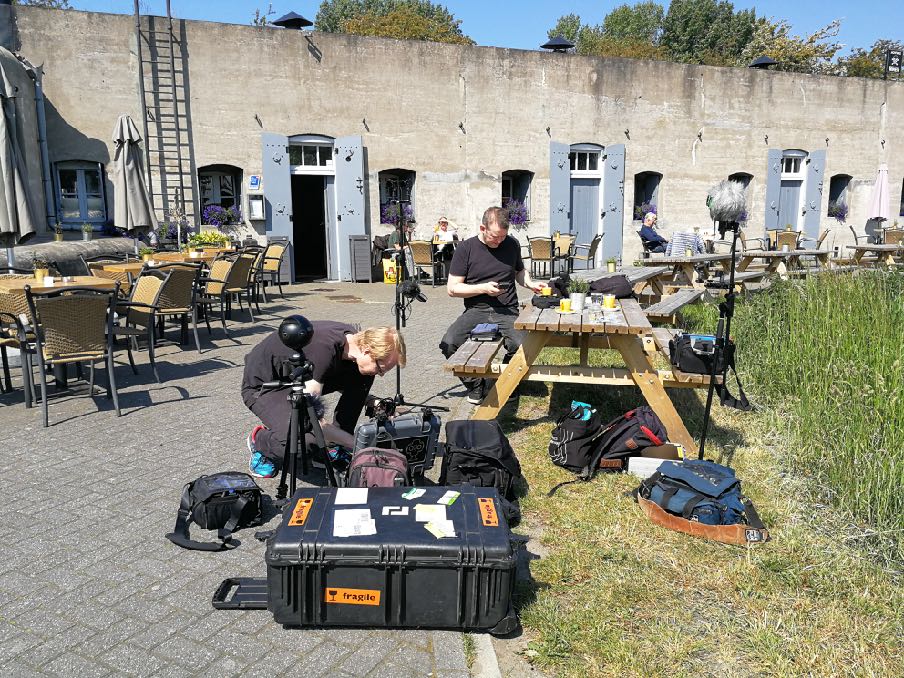
What we were looking for:
• A series of practical experiments which helped us to understand how the equipment behaves and functions - or not - in the field.
• Gathering of information and exchange of knowledge to develop our ideas.
What we found:
• The first microphone we tried out was a Sennheiser AMBEO VR and a ZOOM 8 recorder. This resulted in a noisy and somewhat muffled sound quality, so we switched to the RØDE NT SF1 with the Mixpre 6 recorder. This sounded much better and clearer. The sense of space and detail was quite remarkable. It took some time to fight the problem of wind as there are four capsules in this microphone it is much more sensitive than a normal mic. In the end better windshields did the trick.
• In the field, when you are depending on the weather situation, and you need to be quick and flexible. This type of equipment is less suitable for field work. It takes time to start up and calibrate the cameras and mics, find the right spots and conditions for them, and at the same time the batteries deplete quite rapidly. So this is something to take into account for the future. Working with 3D, VR and 360-degree is quite technical and there are quite some parts involved in the whole workflow. So all the parts have to function and interconnect in order for it to properly function, which means a lot can go wrong.
Recording, Kunstfort Vijfhuizen bees, BJ Nilsen and SML, 24 May 2019, recorded by BJ Nilsen, Gideon Kiers, Lucas van der Velden
Recording, Kunstfort Vijfhuizen Yard, BJ Nilsen and SML, 24 May 2019, recorded by BJ Nilsen, Gideon Kiers, Lucas van der Velden
``
FIELD TEST 2
The Volgermeerpolder - the largest Dutch waste disposal site
July 3 & 5 2019
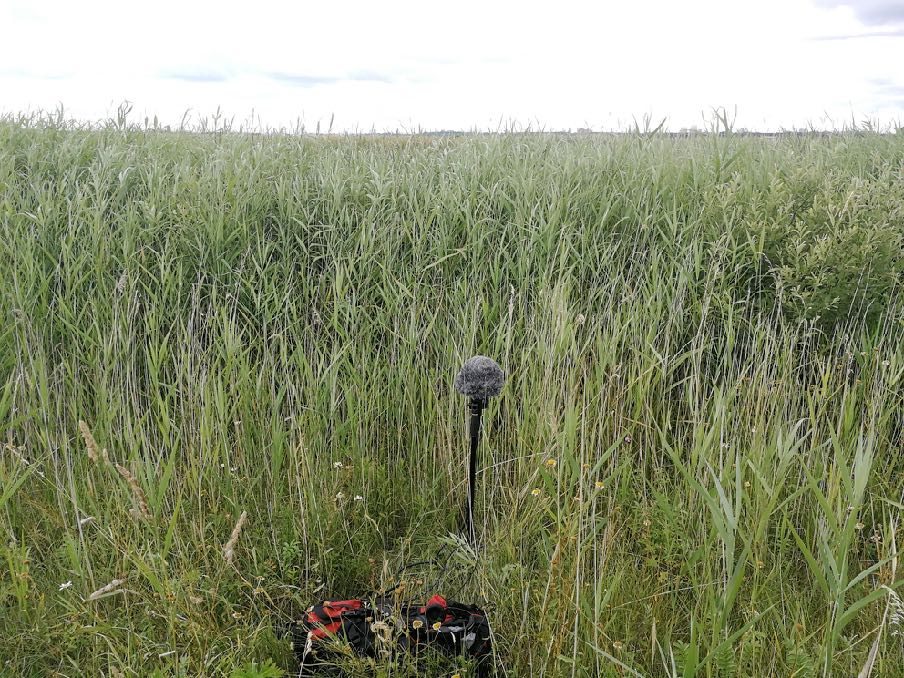
The Volgermeerpolder, situated in the province Noord-Holland, has been legally used from 1927 until 1982 as a waste disposal site. During this period a wide variety of industrial and domestic wastes have been dumped in this infiltrating polder. Since then a big remediation effort has been completed. Nothing of this history is visible, and the landscape appears to have regenerated itself with lots of birds and insects using the area as their habitat.
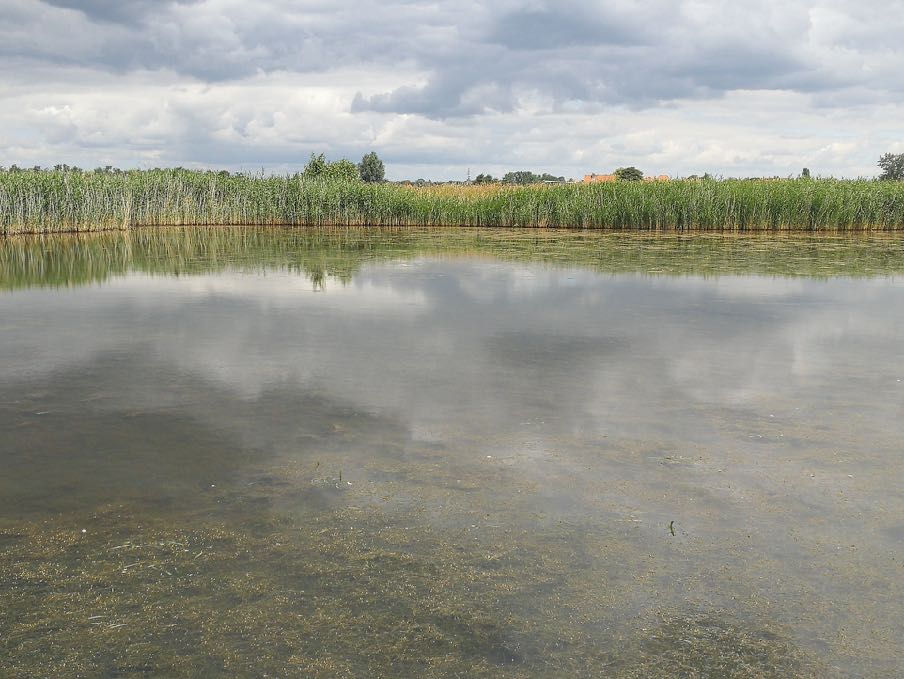
Test equipment:
Sound devices Mixpre 6 with RØDE NT SF1, Hydrophones.
What we were looking for:
• To get a sense of the place and the state the landscape is in.
• How the equipment functions in a wild open space.
• Traces of waste.
• Wildlife.
What we found:
• There was interesting sound material in the ponds that hosted many water insects and migrating birds. It is just a plethora of life there now.
• That day the sound of the airplanes was reflected in the pond, mixing the sound of very small water creatures with the sound of airplanes, like a canvas of mirrored sounds.
• A site to revisit for more extensive recordings in the future, perhaps with more sensitive equipment looking for traces of pollution in the grounds, speak to the villagers.
Recording, Volgermeerpolder, BJ Nilsen and SML, 3 and 5 July 2019, recorded by BJ Nilsen.
Recording, Volgermeerpolderplas, BJ Nilsen and SML, 3 and 5 July 2019, recorded by BJ Nilsen.
``
FIELD TEST 3
URENCO, COVRA and the Borssele nuclear power station, Borsele, the Netherlands
March 10- 12th 2020
COVRA, the Central Organisation for Radioactive Waste, is the only company in the Netherlands that are collecting, processing and storing all radioactive waste. URENCO is an uranium enrichment facility, located in the outskirts of Almelo. Both facilities are due to safety regulations completely fenced off. The Borssele nuclear power station is also surrounded with fencing, with the exception of the cooling water outlet, which is located on the publicly accessible beach.
Test equipment: ambisonic recordings of the areas, Geophones, Hydrophones and Shotgun mics, Insta 360 Pro, and various Geiger counters.
What we were looking for:
• To get a sense of the place and the state the landscape is in.
• How the equipment functions in a wild open space.
• Traces of radioactivity.
• Wildlife.
What we found:
Borssele is a great place for gathering material as the landscape is very varied. There is the reactor site with its archetypical reactor dome building and very high chimney. At the cooling water outlet on the beach, a pungent smell of chemicals is present. The low industrial rumblings, fog and foam assembling on the water contribute to quite a dystopian scene. Next it this there is a small dune nature reserve, and if you turn around facing the beach and the sea it is quite a contrast from being very close to the powerplant with large boats passing by.
We made hydrophonic, infrasonic and ambisonic recordings. Sounds dominated by the plant itself with rumbling sounds from the turbines, the foam on the water was popping as it was disintegrating. Wind hitting structures were picked up by geophones and contact mics. Low radioactive background data were only recorded close to the cooling water outlet, as to be expected, we recorded very little background data elsewhere. We were also interested how the powerplant affected the immediate surroundings, both in water and on ground. As the pictures relieve it is quite a dramatic scenery.
Recording: Borsele atmosphere, Borsele Nuclear Reactor, BJ Nilsen and SML, 10-12 March 2020, recorded by BJ Nilsen, Lucas van der Velden.
Recording: windmill geophone, Borsele Nuclear Reactor, BJ Nilsen and SML, 10-12 March 2020, recorded by BJ Nilsen, Lucas van der Velden.
Recording: GPS_EMF_Urenco, Borsele Nuclear Reactor, BJ Nilsen and SML, 10-12 March 2020, recorded by BJ Nilsen, Lucas van der Velden.
Recording: Kraftwerk Borsele Coolingwater Ambix, Borsele Nuclear Reactor BJ Nilsen and SML, 10-12 March 2020, recorded by BJ Nilsen, Lucas van der Velden.
``
FIELD TEST 4
Žirovski Vrh - former Uranium mine, Gorenja Vas–Poljane, Slovenia.
September 30 2019
The former uranium mine Žirovski Vrh, the Jazbec mill waste pile and the Boršt mill tailing site are situated 45 km west from Ljubljana. It was the only working uranium ore mine in Slovenia and constructed to provide uranium concentrate for the nuclear power station in Krsko. The mine started producing ore in 1982, and the yellow cake production in the mill started in 1984. The whole operation was closed down in 1990. In this period, 3.300.000 tons of crude ore were dug up that were the result of processing 452 ton of yellow cake. After closing the mine, a huge effort was undertaken to minimize and contain pollution by transforming the Boršt and Jazbec sites into remediation sites. Approximately 2.000.000 tons of radioactive waste were buried here, covered with a thick layer of rocks and clay, on top of which now green grass grows.
Test equipment: Ambisonic, Geophones, Hydrophones and Shotgun mics, GoPro, Panasonic GH2. Also radioactive tracers: Geiger counters, Gamma spectroscope.
What we were looking for:
• Inaudible and invisible information such as radioactivity, electromagnetic fields and geophonic vibrations combined with audible and visible information such as ambisonic field recordings of wildlife, everyday human activity and weather.
What we found:
While driving and walking around in the area of the mine and the remediation sites, we did not pick up more than the usual background radiation. Only when driving up to the bottom of the Jazbec site, the measurements started to show some small spikes from rock formations next to the road. The remediation site is constructed on a slope, reminiscent of an alpine meadow. Only this one has fences with warning signs reminding us that this is a different kind of meadow. On the bottom of the Jazbec slope we found a water drainage spiking up to 3.0 μSv/h. so we decided to do some field recordings there, combining two Geiger counters, a gamma spectroscope, a stereo microphone and an ambisonic microphone. The natural beauty of the area together with the franticly clicking sounds of the radioactive measurement equipment created quite an eerie feeling, the seriousness of the matter with our own collective nuclear memories adds to the odd suspense.
``
Recording: Expanded Field Recording test, BJ Nilsen and SML, Žirovski Vrh, 28, 29, 30 September 2019, Recorded by BJ Nilsen, Gideon Kiers, Lucas van der Velden.
``
Interview: Ralf Baumgartner - CEO & Founder of Sonible
Sonible, Graz, Austria
March 6, 2020
On 6 March 2020, we visited with Ralf Baumgartner at Sonible in Graz. He demonstrated their IKO speaker. It is the most compact speaker system based on 3D audio technology, Higher Order Ambisonics (HOA). The IKO is able to send focused sound beams in any direction desired – made possible through its unique form and the use of complex algorithms. Using wall and ceiling reflections to establish a unique and distinct sound space, the IKO surrounds listeners in the media and artistic event. Highly immersive sonic experiences are now possible using just this one single compact 3D audio speaker.